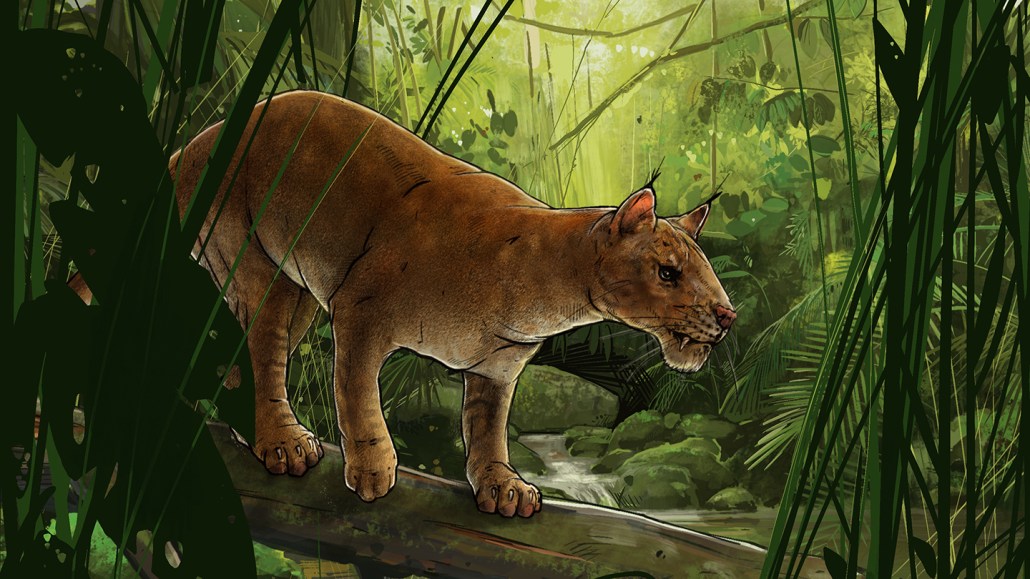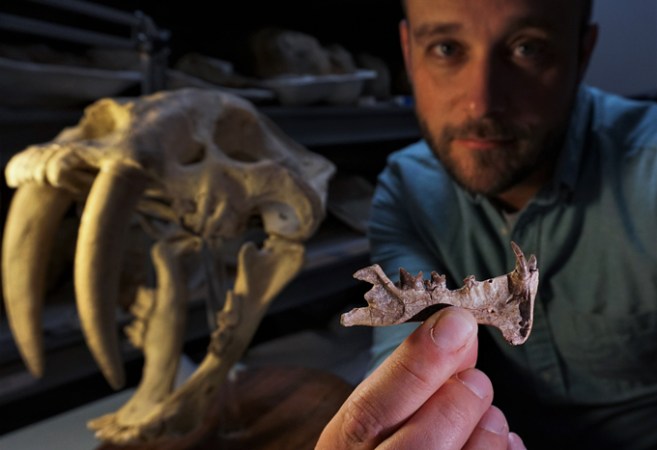A new saber-toothed mammal was among the first hypercarnivores
A 42-million-year-old jawbone has a gap to fit daggerlike upper teeth

A bobcat-sized species with an appetite for almost only meat — and the saberlike canine teeth and sharp slicing teeth to go after its meal — roamed what’s now San Diego some 42 million years ago, as imagined in this illustration.
San Diego Natural History Museum








